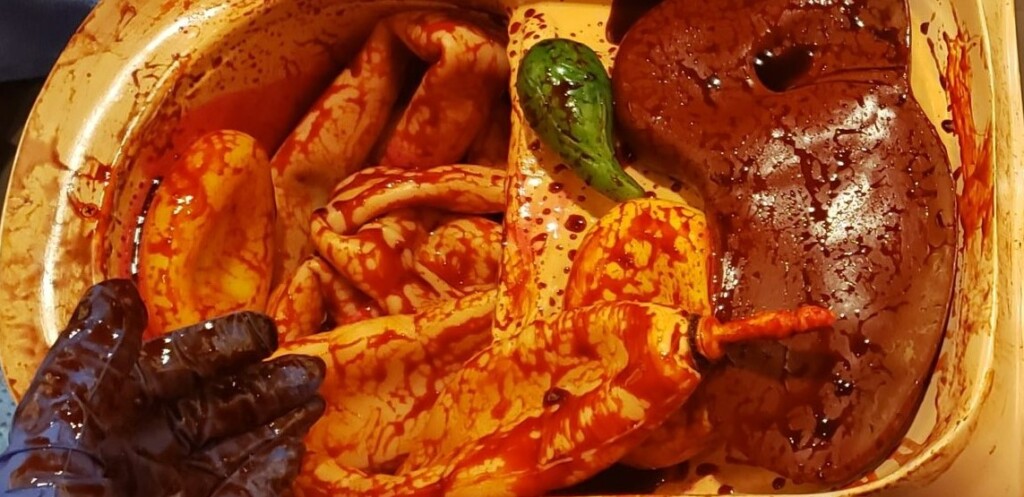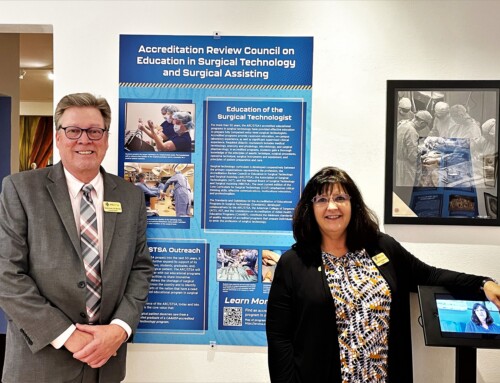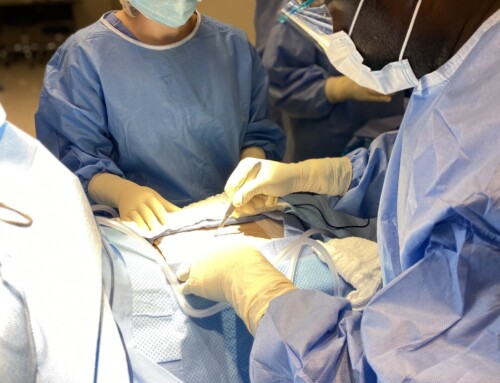By Jay Barrueta, AAS, CST
Creativity and hands-on learning are a necessity for keeping students engaged, but what other solutions can instructors use to put our creative energy to better use and provide students the best preparation for surgery? Our program has started using Mock Medical drop-ins, trainers, and laparoscopic tower to give students a realistic surgical simulation experience that is cost effective for our campus. As instructors, we can now focus on teaching rather than creating our own simulation devices.
We use the breast model with lumps to acclimate the students to minor surgical procedures. From there we build more advanced skills using the gallbladder and appendix drop-ins. Using both drop-ins give the students and instructors a wide variety of surgical procedures practice. For example, the gallbladder drop-in allows us to demonstrate a cholecystectomy, liver biopsy, exploratory laparotomy, and even a bowel resection with colostomy!
Interchangeable procedure drop-in for the Mock Medical manikin system.
The drop-ins come with a standard skin topper and offer an insufflated skin topper as well. The skin toppers are easy to change out with just a few screws (newer models are even easier to change now with magnets). There is no maintenance or prep work that must be done to use or create the true feel of surgery. The drop-ins are reusable and with some simple silicone glue which approximates the skin nicely. The insufflated skin topper gives our students a real sense of laparoscopic surgery. Teaching the laparoscopic procedural steps: “Time out. Local. Knife. Trocar.” is very realistic.
The laparoscopic tower’s camera and light source are in perfect working order for our mock procedures. Having this equipment in our lab allows us to also teach our students how to white balance, work the camera, perform circulating duties, and troubleshoot equipment. We have all been in a room where something has not wanted to work properly. I walk students through the steps of how everything connects and why, what to do if things are not working, what to look for, and how to troubleshoot from the sterile field to the circulator. Teaching these skills in the lab prepares students for equipment malfunctions in the real world.
Overall, the Mock Medical drop-ins, trainers, and laparoscopic tower have made my job easier as an instructor. Not long ago I was creating laparoscopic simulation with a cardboard box, staying up late at night to sew a liver from pillowcases, or making breasts with a stockinette and adding marbles or pom-poms as lumps. These items have made teaching fun and vastly more descriptive. Can you imagine what it would be like trying to learn about a bowel resection with colostomy from only a book or by watching videos? With these new “tools” our teaching game has been improved 10-fold and the ability to really show our students how an operation happens in the OR has substantially improved since drop-ins were created. They provide students the opportunity to see, touch, and practice — not just watch, read and memorize. Hands-on learning makes all the difference for students. Simulation trainers have improved greatly over the years, and I can’t wait to see what innovations the future holds for our programs.
Jay Barrueta, AAS-ST, CST, is the surgical technology program director at Success Education Colleges in Riverside, California, where he has taught for more than 10 years. Jay has been a surgical technologist since 2004 and has a passion for peripheral vascular surgery. In his free time, you can find him at the grill or smoker cooking up delicious meals for his family.





